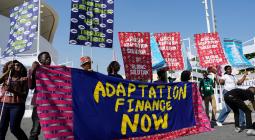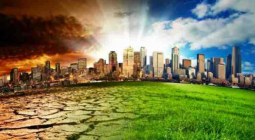Europe must do more to adapt to climate change, says EU environment agency
Europe needs to take immediate action to address the rapidly increasing climate challenges, the EU’s environment agency said in its first European Climate Risk Assessment (EUCRA), published on Monday (11 March), which identified 36 major risks.
The European Environment Agency’s European Climate Risk Assessment aims to identify climate-sensitive sectors and the political priorities for adapting to climate change. According to the assessment, adaptation policies and measures in Europe are not sufficiently reactive to the rapidly increasing environmental risks.
This report is in line with the recommendations of the Liège Declaration, signed two months earlier as part of the Belgian Presidency of the EU Council. Seventy organisations, local authorities, and environmental NGOs called on the EU to speed up the implementation of policies to adapt to climate change.
“Our new analysis shows that Europe faces urgent climate risks that are growing faster than our societal preparedness.”, said the EEA Executive Director Leena Ylä-Mononen.
For intensified and immediate action
In recent years, Europe has experienced increasingly regular extreme climatic events, including floods, heatwaves, fires, and severe and prolonged droughts.
The assessment identified 36 major climate risks for Europe in five main areas: ecosystems, food, health, infrastructure, the economy, and finance. More than half of these risks require intensified and immediate action, according to the report, in particular to protect ecosystems and people.
“European and national policymakers must act now to reduce climate risks both by rapid emission cuts and by strong adaptation policies and actions”, warned the EEA director.
These risks are “shared” by all EU countries. The EEA’s assessment highlighted the need for the European institutions and the 27 member states to work together and involve the local and regional levels in coordinating and implementing emergency action plans.
The case of drought
Drought is one of the major climatic risks facing Europe. During this winter, major shortages of water resources were reported in the coastal regions of the Iberian peninsula, Italy, and the Mediterranean islands.
Restrictions on the use of water have been announced or applied this season in Spain and Portugal. Some regions in the Mediterranean basin are already on fire alert.
The record-breaking heat of the last nine months, coupled with a prolonged lack of rainfall, has had a profound effect on watercourses and groundwater, as well as on vegetation growth.
In addition, seasonal forecasts point to a warmer-than-average spring in 2024.
As part of the EU’s new strategy for adaptation to climate change, adopted in 2021, the European Commission (DG Environment and DG Joint Research Centre) has launched the European Drought Observatory for Resilience and Adaptation (EDORA), which aims to improve resilience and adaptation to drought across the EU.
According to the European Environment Agency, around 30% of the population of southern Europe lives in areas subject to permanent water stress, and 70% during the summer.
The EEA also pointed out that prolonged drought poses a direct threat to our food security and drinking water supplies, as well as major risks to energy production, transmission, and supply.
One of the EEA’s recommendations is to transition from animal proteins to sustainably grown plant proteins in order to reduce water consumption in agriculture.
According to the Water Food Network, it takes more than 15,000 litres of water to produce 1kg of beef, compared with 322 litres for 1kg of vegetables).
Cover photo: According to the European Environment Agency, around 30% of the population of southern Europe lives in areas subject to permanent water stress, and 70% during the summer. [Crédit photo: Quintanilla/shutterstock.com]





